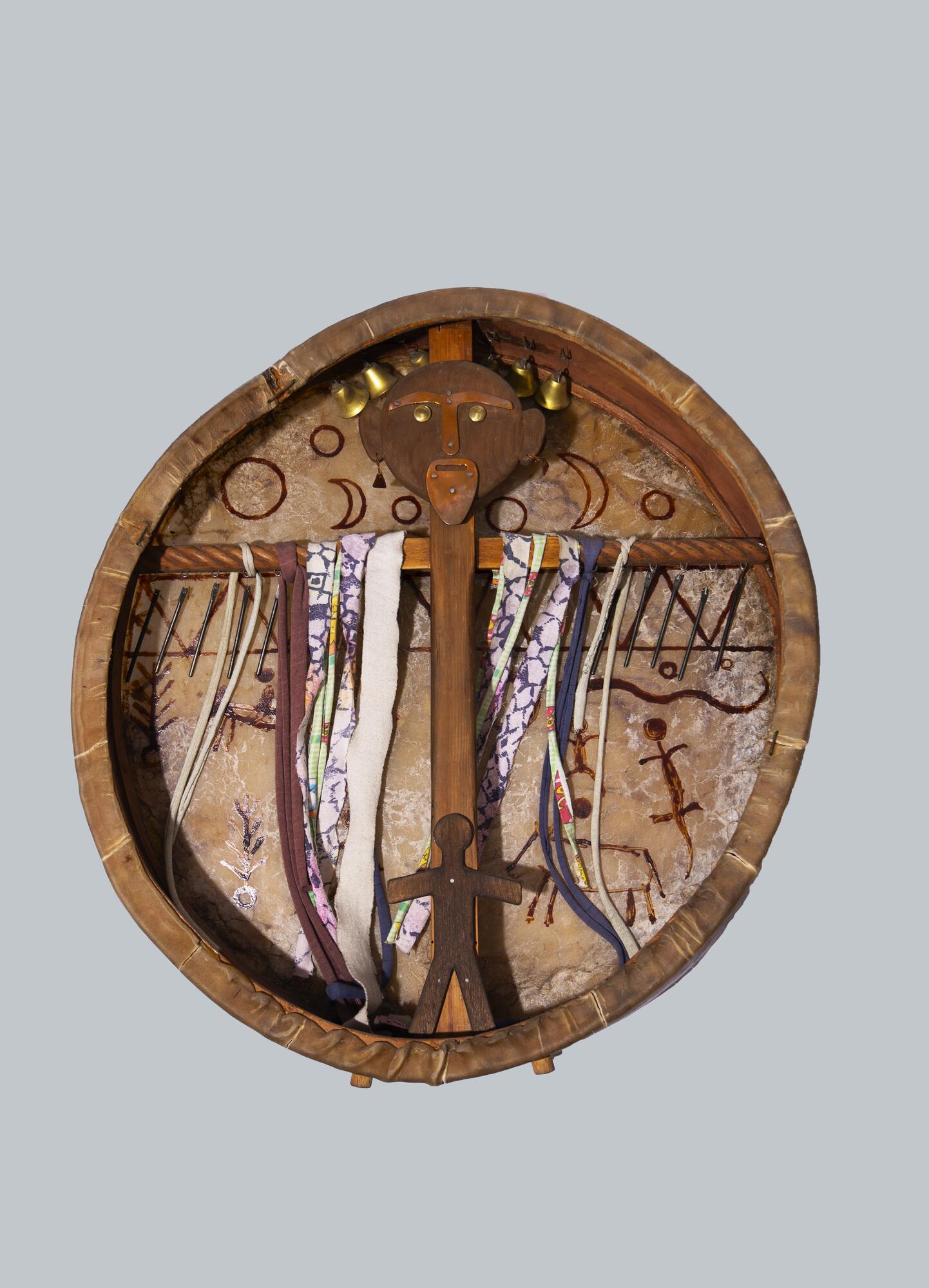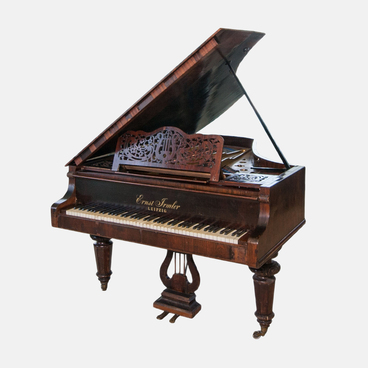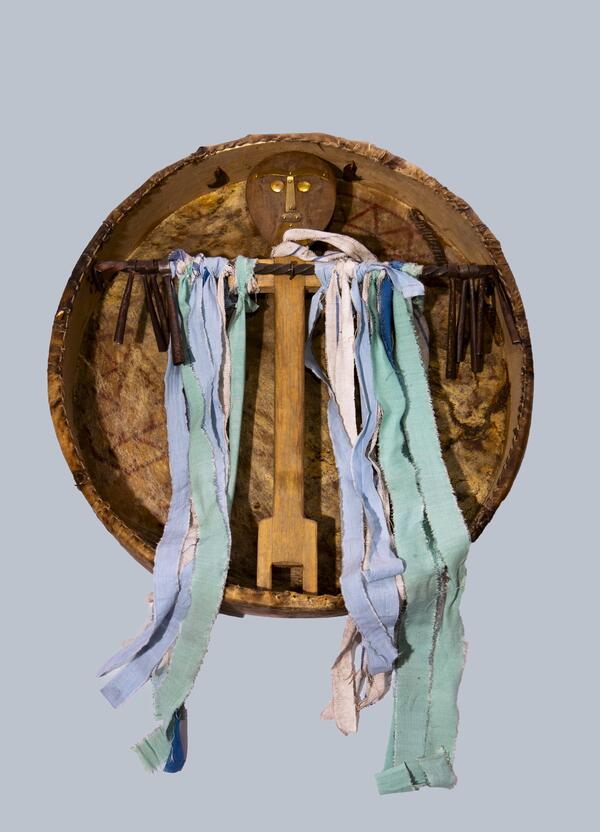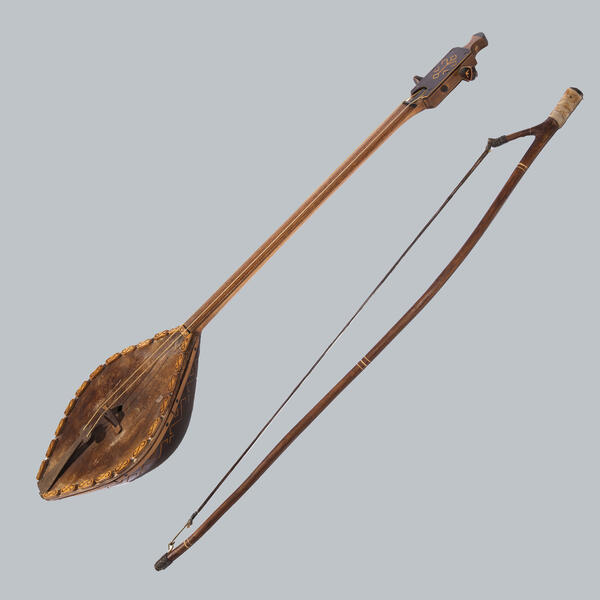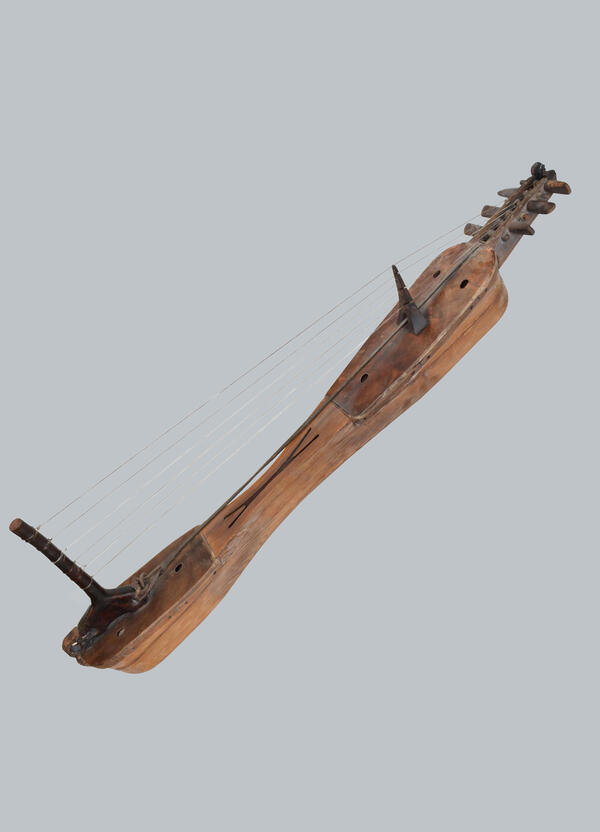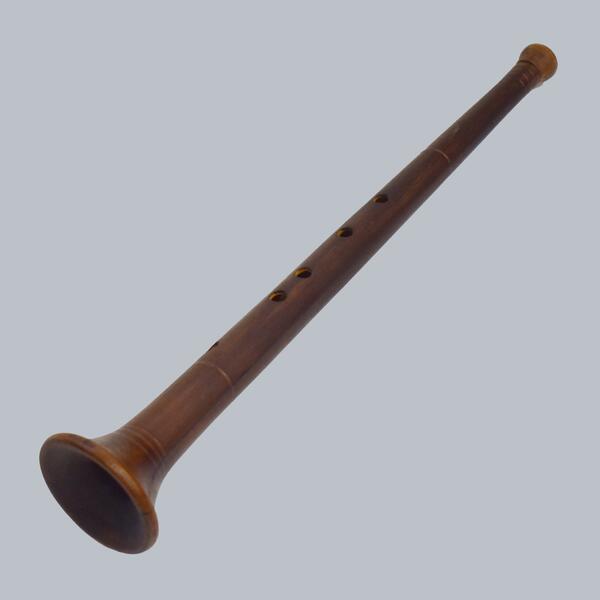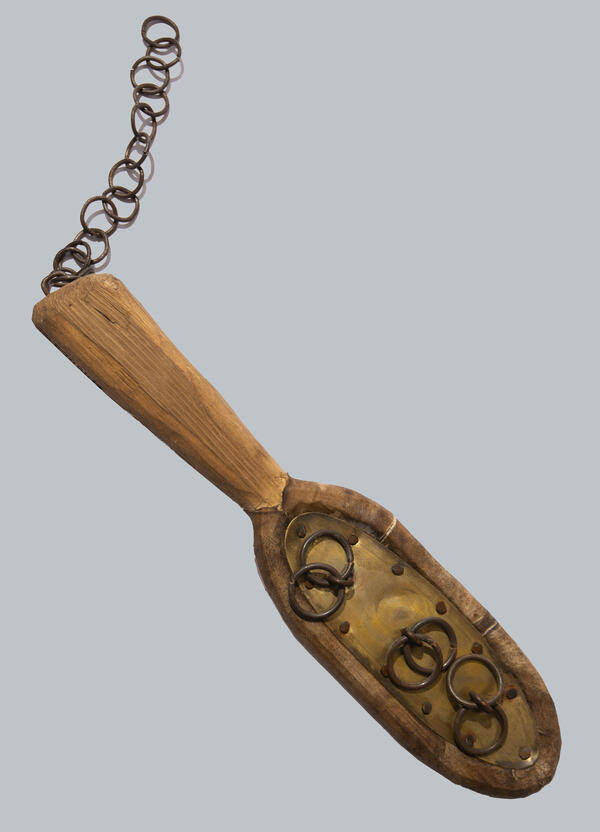The authentic Altai musical instruments rebuilt by Alexander Gnezdilov include shamanic drums.
A drum intended for the trance-like ritual of “kamlanie” was never used in everyday life or by anyone else except its owner. However, in the 1920s, a shamanic drum was first brought to the stage as a percussion instrument by the composer Andrey Anokhin in the “Altai Cycle”: the drum can be heard in the suite “Altai Khan”, the opera etude “Erlik Khan” and the shamanic mystery “Talai Khan”. By the late 1930s, the once-sacred attribute had already found its place in the Altai folk orchestra. Nowadays, shamanic drums are often used in concert and theater performances.
Andrey Anokhin (1869–1931) was not only a composer but also an ethnographer and educator who brought Altai music to a professional level. In addition to composing music, he prepared a detailed description of the drum of the Bachat Teleuts. It was based on his research that Alexander Gnezdilov started building the instrument.
Before making (or rather “discovering”) a drum, a new shaman received instructions on what it should look like from their patron spirit, one of the deceased ancestors. This continuity can be seen in the drum’s design. The inner side of the instrument was divided into two equal parts by a birch handle. The handle itself was made in the form of a human figure symbolizing the deceased patron shaman and featured a smaller figure at the bottom depicting the current owner.
The head of the patron shaman was made oval. Thin copper plates were used to depict the facial features. The image always had ears with earrings attached to them. By listening to the rattling of these earrings, the shaman could interpret the will of the spirits. For the same purpose, bells were attached to the shell.
The figure’s arms were made in the form of a perpendicular twisted iron rod. The arms were equipped with iron plates and thin metal “arrow” bars for protection from evil spirits. After inviting a shaman to perform a ritual, people decorated the drum with colored ribbons.
Traditionally, the drum was made of wood, iron, copper, leather, hair ropes, and hemp threads. The “discovery” of a drum traditionally lasted several days and included choosing and processing wood and leather, bringing the instrument to life (“kamlanie”), and presenting the new instrument to the master of the sacred mountain. Finally, the drum was decorated with ritual images.
Neither the shell nor the iron parts were ever
changed. In case of damage, only the leather membrane could be replaced.
